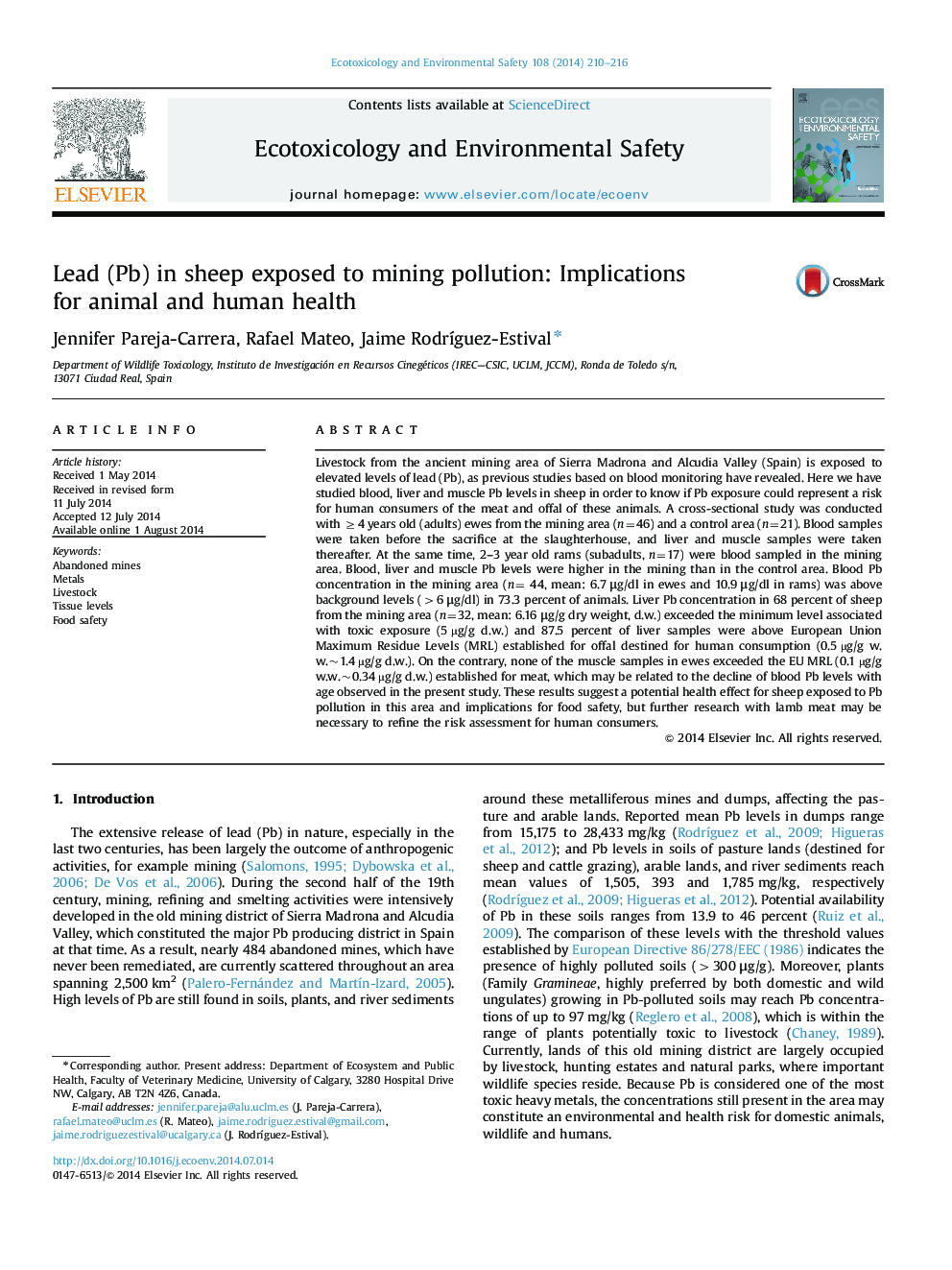| Article ID | Journal | Published Year | Pages | File Type |
|---|---|---|---|---|
| 4420122 | Ecotoxicology and Environmental Safety | 2014 | 7 Pages |
•Blood, liver and muscle Pb levels were elevated in sheep from the mining area.•Blood Pb levels in sheep declined with the age.•Liver Pb concentration in 87.5 percent of sheep from the mining area exceeded EU regulations.•Muscle Pb concentration in adult sheep were below EU maximum residue levels.
Livestock from the ancient mining area of Sierra Madrona and Alcudia Valley (Spain) is exposed to elevated levels of lead (Pb), as previous studies based on blood monitoring have revealed. Here we have studied blood, liver and muscle Pb levels in sheep in order to know if Pb exposure could represent a risk for human consumers of the meat and offal of these animals. A cross-sectional study was conducted with ≥4 years old (adults) ewes from the mining area (n=46) and a control area (n=21). Blood samples were taken before the sacrifice at the slaughterhouse, and liver and muscle samples were taken thereafter. At the same time, 2–3 year old rams (subadults, n=17) were blood sampled in the mining area. Blood, liver and muscle Pb levels were higher in the mining than in the control area. Blood Pb concentration in the mining area (n= 44, mean: 6.7 μg/dl in ewes and 10.9 μg/dl in rams) was above background levels (>6 μg/dl) in 73.3 percent of animals. Liver Pb concentration in 68 percent of sheep from the mining area (n=32, mean: 6.16 μg/g dry weight, d.w.) exceeded the minimum level associated with toxic exposure (5 µg/g d.w.) and 87.5 percent of liver samples were above European Union Maximum Residue Levels (MRL) established for offal destined for human consumption (0.5 µg/g w.w.~1.4 µg/g d.w.). On the contrary, none of the muscle samples in ewes exceeded the EU MRL (0.1 µg/g w.w.~0.34 µg/g d.w.) established for meat, which may be related to the decline of blood Pb levels with age observed in the present study. These results suggest a potential health effect for sheep exposed to Pb pollution in this area and implications for food safety, but further research with lamb meat may be necessary to refine the risk assessment for human consumers.
Graphical abstractFigure optionsDownload full-size imageDownload as PowerPoint slide
